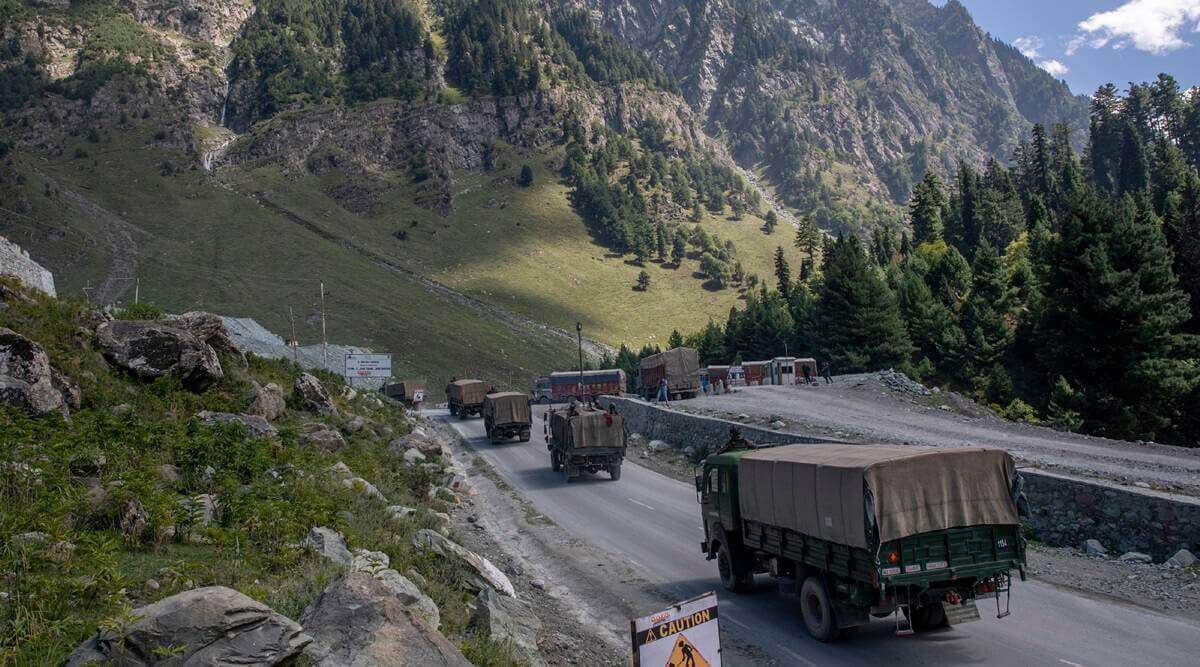During the 16th round of commander-level talks held between India and China on Sunday, both sides agreed to further disengage troops from the remaining friction points along the Line of Actual Control (LAC).
The talks at the Chushul-Moldo border meeting point, which began at 9:30 am and went on till 10 pm, mainly focused on negotiating the disengagement of troops at Patrolling Point 15 (PP15), better known as the Hot Springs area. The Indian side was represented by 14 Corps Commander Lt. Gen. Anindya Sengupta, while China’s People Liberation Army (PLA) was represented by Major Gen. Yang Lin, the commander of the South Xinjiang military district.
Commenting on the latest round of negotiations, a government source told News18 that “Both sides agreed on further reducing the remaining strength of troops from the Hot Springs area between them.”
Joint Press Release of the 16th Round of India-China Corps Commander Level Meeting:https://t.co/72pIsJi4v3@IndianDiplomacy @MEAIndia pic.twitter.com/90EERBOM5M
— India in Guangzhou (@cgiguangzhou) July 19, 2022
In a joint statement released after the meeting, both sides said that they further built upon “the progress made at the last meeting” in March. They added that “in-depth” discussions about “the resolution of the relevant issues along the LAC in the Western Sector” continued in a “constructive,” “forward looking,” and “frank” manner. They noted that their “remaining issues” need to be resolved “at the earliest,” as it will help “in restoration of peace and tranquility along the LAC in the Western Sector and enable progress in bilateral relations.”
The statement added that in the meantime, both countries will “maintain the security and stability on the ground in the Western Sector.” They concluded the meeting by agreeing “to stay in close contact and maintain dialogue through military and diplomatic channels and work out a mutually acceptable resolution of the remaining issues at the earliest.”
Soon after the conclusion of 16th Corps Commander-level talks with India, China releases a video showing PLA troops carrying out a military exercise over #Pangong Lake. #Ladakh pic.twitter.com/1s90IkYSTg
— Rishikesh Kumar (@rishhikesh) July 19, 2022
That being said, the two sides have agreed to disengagement before and failed to follow through. Therefore, it has been suggested that the latest round of talks yielded little headway and that multiple rounds of negotiations may be required between both militaries in the future to achieve common goals. In this regard, a top government official had earlier told News18 that the troops will “continue to remain on high alert, to foil any incursion bids during the summers.” “The talks will continue and that is a positive step,” they added.
Commenting on the slow progress of disengagement negotiations, Chinese state-owned media house Global Times quoted Qian Feng, the Director of the Research Department of the National Strategy Institute at Tsinghua University, as saying that “Although the previous two rounds of commander-level talks in 2022 did not achieve a major breakthrough, it is worth noting that both sides have insisted on relying on existing bilateral channels to resolve border issues through dialogue and communication.” On a hopeful note, Qian further added that the “most dangerous” moment in the two neighbours’ volatile bilateral relations has passed and that their relations “have been developing toward a positive momentum” since the Galwan Valley skirmish.
China and India agreed to work out a mutually acceptable resolution of the remaining issues at the earliest date after the 16th round of the China-India Corps Commander Level Meetings was held at the Chushul-Moldo border meeting point on the Indian side on Sunday. pic.twitter.com/rBxa1FL0Wh
— People's Daily app (@PeoplesDailyapp) July 19, 2022
The 16th round of border talks comes only days after Indian External Affairs Minister (EAM) S. Jaishankar met with Chinese Foreign Minister (FM) Wang Yi in Bali on the sidelines of the G20 Foreign Ministers’ Meeting. During their talks, both agreed to complete disengagement along the two countries’ LAC. A press release by the Indian Ministry of External Affairs (MEA) following their meeting said that Jaishankar “called for an early resolution of all the outstanding issues along the LAC in Eastern Ladakh.” Wang and Jaishankar had also affirmed that both sides’ “military and diplomatic officials… should continue maintaining regular contact.”
In June 2020, border tensions between India and neighbouring China flared up when several troops engaged in stone-pelting and fistfights in Eastern Ladakh and Northern Sikkim. The skirmish resulted in casualties on both sides, including 20 Indian soldiers and over 40 Chinese soldiers. According to Army sources, the violence in Ladakh initially began after Chinese troops objected to the presence of their Indian counterparts in the disputed lake area.
India and China have now held 16 rounds of military negotiations to resolve the row over eastern Ladakh. Although the most recent round of talks was unsuccessful in reaching a concrete settlement, the two sides did successfully disengage on the north and south banks of the Pangong lake last year. The 135-kilometre-long landlocked lake is located partly in the Ladakh region and partly in Tibet; China controls two-thirds of the area.
New Delhi has consistently maintained that peace and tranquillity along the LAC are necessary for the overall stability of bilateral ties. Each side currently has around 50,000 to 60,000 troops stationed along the LAC.

